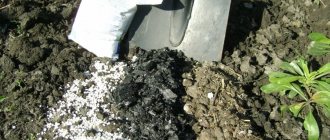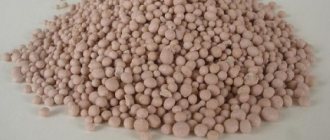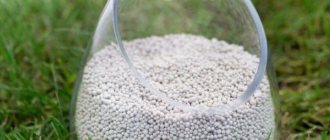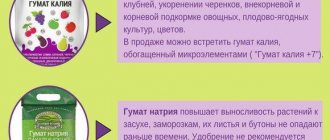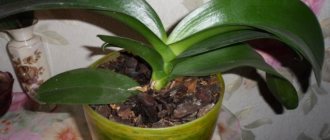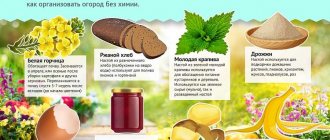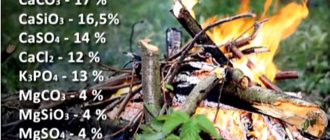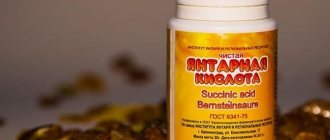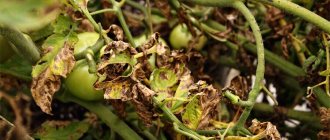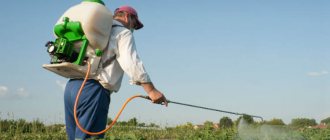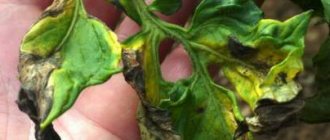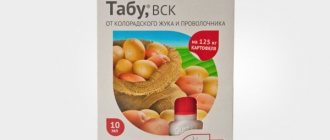A matchbox is regularly used as a measuring unit for measuring not only various bulk products, but also for weighing fertilizers in the country, so it will be useful for many to know how many grams of various fertilizers are in a matchbox in order to quickly measure from without scales for feeding bushes, trees and plants in the garden.
how much fertilizer is in a teaspoon...?
| substance | tea spoon | tablespoon | Matchbox | glass 200ml |
| ammonium nitrate | 4 | 17 | 17 | 170 |
| dolomite flour | 8 | 25 | 34 | 340 |
| ash | 2 | 8 | 10 | 100 |
| fluff lime (slaked lime) | 3 | 9 | 12 | 120 |
| lime flour | 8 | 22 | 30 | |
| potassium salt | 5 | 17 | 22 | 220 |
| potassium magnesium (potassium sulfate + manganese) | 5 | 16 | 20 | 200 |
| calcium nitrate | 5 | 15 | 20 | 200 |
| copper sulfate | 5 | 16 | 22 | 220 |
| iron sulfate | 5 | 16 | 22 | 200 |
| urea (carbamide) | 3 | 10 | 13 | 130 |
| sodium nitrate | 6 | 18 | 24 | 240 |
| nitroamophoska | 5 | 14 | 18 | 180 |
| nitrophoska | 5 | 15 | 20 | 200 |
| colloidal sulfur | — | — | 13 | 130 |
| soda ash | — | — | 12 | 130 |
| potassium sulfate (potassium sulfate) | 6 | 20 | 26 | 260 |
| ammonium sulfate | 5 | 12 | 16 | 160 |
| double granulated superphosphate | 5 | 15 | 20 | 200 |
| simple granulated superphosphate | 5 | 17 | 22 | 220 |
| superphosphate powder | 6 | 18 | 24 | 240 |
| phosphorus flour | 9 | 26 | 35 | 350 |
| potassium chloride | 5 | 14 | 18 | 180 |
how much does fertilizer weigh in a 10 liter bucket?
| Name | kg |
| Sod land | 12 |
| Mature compost | 10 |
| Wood ash | 5 |
| Slaked lime (lime - fluff) |
How to calculate the amount of active substance and fertilizer.
Sometimes plant care recommendations indicate the weight of the active substance rather than the fertilizer itself. For example, it is recommended to add 6 grams of nitrogen per square meter. Note, not urea, not ammonium nitrate, but nitrogen.
In such cases, the following formula is applicable. The required amount of active substance (in our example it is 6 g of nitrogen) must be multiplied by 100 and divided by the percentage of nitrogen in the fertilizer. Let's take ammonium nitrate as an example. The percentage of nitrogen in it is 34%. Let's do the calculation:
600g: 34 = 17.65, well, that’s about 18 grams. This means that in order for the earth to receive 6 g of nitrogen per 1 square meter, we need to take 18 grams of ammonium nitrate, and this can easily fit into a salt spoon (table above).
Let’s calculate as an example: per 3 square meters you need to add 8 grams of phosphorus. We have double superphosphate, the percentage of active phosphorus in it is 40%. We count:
800g: 40% = 20g. 20 grams of double superphosphate is a matchbox (table above).
Why is it dangerous to exceed the norm of fertilizers?
It is important to measure fertilizer accurately. Their excess in the soil harms plants. People who eat overfed vegetables suffer indirectly. An overdose of nitrogen leads to the accumulation of nitrates in fruits and greens, reduces yield, impairs the keeping quality and taste of vegetables.
The ten most dangerous fertilizers that are best not to be used Fertilizing plantings exclusively with manure does not give such good results as when using additional...
Plants overfed with phosphorus have a shorter growing season. The leaves turn yellow early and fall off. Excess potassium inhibits development and impairs nitrogen absorption. There is only one conclusion from all of the above: all fertilizers must be measured strictly according to the norm. Then the soil will not lose fertility, the grown fruits will not cause harm to health, and the yield will increase.
How can I replace fertilizer scales?
When preparing fertilizers and solutions, summer residents often begin to come up with different measuring devices, boxes, glasses and buckets.
If you don’t have scales at hand at your dacha, you can always replace them with improvised means. The main thing is to know how much fertilizer a particular container can hold. You can keep this reminder at your dacha. It can be useful to you at any time.
One 10 liter bucket can hold:
— 10 kg of compost or old greenhouse soil; — 5 kg of dry peat; - 12 kg of turf soil; — 15 kg of chicken manure; — 5 kg of wood ash; — 8 kg of humus; — 8 kg of fresh horse manure; — 9 kg of cow manure;
One glass (250 grams) may contain:
— 160-180 grams of ammonium nitrate or ammonium sulfate; — 90-100 grams of wood ash; - 260 grams of potassium sulfate; — 185-215 g of superphosphate; - 185 grams of potassium chloride; — 180-200 grams of fertilizer mixture (vegetable, fruit, etc.);
A matchbox (empty) may contain:
— 12 gr. fluff lime; - 10 gr. ash; - 15 gr. carbamide (urea); — 17 gr. ammonium nitrate; — 17 gr. ammonium sulfate; — 22 gr. sodium nitrate; — 18 gr. potassium nitrate; — 22 gr. superphosphate in granules; — 24 gr. superphosphate powder; - 20 gr. ammophos; - 15 gr. nitroammofoski; - 15 gr. nitrophos; — 18 gr. potassium chloride; — 25 gr. potassium sulfate; - 20 gr. potassium salt; — 25 gr. potassium nitrate; - 20 gr. potassium magnesium; - 20 gr. complex fertilizers; — 34 gr. phosphorus flour;
Water can be measured:
- 1 glass (faceted and thin, with a rim) = 250 cc - 250 g. - 1 glass (faceted, without rim) = 200 cc - 200 g. - 1 tablespoon = 15 cc - 15 g. water; - 1 teaspoon = 5 cc - 5 g. water; - 1 faceted glass (200 gr.) = 13 tablespoons of water; - 1 tablespoon = 3 teaspoons; - 1 teaspoon = 100 drops; Place 0.25-0.5 grams of light powder or 1-2 grams of heavy powder on the tip of the knife.
If you feed small plants or seedlings, use small doses of fertilizer. I will give doses of fertilizers for a tablespoon and a teaspoon. The accuracy is approximately 0.5 grams, and fertilizer should be poured level with the edges, without a slide.
A tablespoon (15 g) may contain:
— 12 gr. ammonium nitrate; - 9 gr. slaked lime; — 23 gr. dolomite flour; — 26 gr. lime flour; — 17 gr. potassium salt; - 10 gr. carbamide (urea); — 14 gr. ammonium sulfate; - 20 gr. potassium sulfate; — 17 gr. superphosphate (granulated); — 15 g superphosphate (double); — 18 gr. superphosphate (simple); — 28 gr. phosphorus flour; — 14 gr. potassium chloride;
A teaspoon (5 g) may include:
- 4 gr. ammonium nitrate; - 3 gr. slaked lime; — 8 gr. dolomite flour; - 9 gr. lime flour; - 5-6 gr. potassium salt; - 3 gr. carbamide (urea); - 5 gr. ammonium sulfate; — 6-7 gr. potassium sulfate; - 5-6 gr. superphosphate (granulated); — 5 g superphosphate (double); - 6 gr. superphosphate (simple); - 6 gr. phosphorus flour; - 5 gr. potassium chloride;
If you use measuring cups and beakers, then use the scale for water or liquid in your calculations.
The main nuances of using fertilizers in the garden
Experienced gardeners and gardeners use many recipes for nutritional supplements to ensure that the fruits grow tasty and healthy. Sometimes a portion in grams is required not of the entire finished complex, but of a specific chemical element. To calculate, the required amount of a substance should be multiplied by 100, and then divided by the percentage concentration of this component in the composition.
For example, to feed cucumbers, add 7 g of nitrogen per square meter of bed. Various nitrogen-containing fertilizers are suitable. The most popular is ammonium nitrate, its nitrogen concentration is 34%. The calculations are as follows:
7 X 100: 34 = 20.58 (g) - this is how much is required to add per 1 m².
There is no need to measure milligrams; portions are always rounded down. Knowing the measure of fertilizer in a tablespoon or teaspoon, you can easily measure the required dosage.
The percentage of active chemical in the finished complex is indicated on the packaging. It is important to remember that the higher the percentage of concentration of the substance, the smaller the portion of fertilizer required.
Experts do not recommend using the same dosage every year: the amount of chemical applied may vary depending on the condition of the plant and the composition of the soil.
In the age of digital technology, special mobile applications have been developed for advanced summer residents that quickly calculate the required dose of the drug. The initial data is entered into the formula of the built-in online calculator - the result is ready instantly. The difficulty is that most applications are not translated into Russian, and not every dacha village has access to the Internet. Therefore, it is advisable to save the proposed measurement tables in your phone’s memory or print them out so that you have them on hand from the beginning of the season.
By using precise doses of fertilizers for garden plants, you can achieve a rich and healthy harvest without risk to health.
When using fertilizers, it is necessary to measure 30 grams of nitroamophoska, or 15 grams of double superphosphate. But how much is it in volume?
How many grams of complex fertilizer “Malyshok” are in a teaspoon? Is it possible to fertilize pumpkin with it?
| 6 | |
| Sawdust horse manure (litter) | 5 |
| Horse dung | 8 |
| Cow dung fresh | 9 |
| Slurry | 12 |
| Dry sawdust | 8 |
| Humus | 8 |
| Bird droppings | 5 |
| garden soil | 12 |
| Dry peat | 5 |
| Fertilizers | Glass, volume 200 ml | Matchbox volume 20 ml | Tablespoon, volume 15 ml | Teaspoon, volume 5 ml |
| Ammonium nitrate | 163 | 17 | 12 | 4 |
| Slaked lime | 120 | 12 | 9 | 3 |
| Dolomite flour | 300 | 30 | 23 | 8 |
| Lime flour | 340 | 34 | 26 | 9 |
| Potassium salt | 220 | 22 | 17 | 5-6 |
| Urea (urea) | 130 | 13 | 10 | 3 |
| Ammonium sulfate | 186 | 19 | 14 | 5 |
| Potassium sulfate | 260 | 26 | 20 | 6-7 |
| Granulated superphosphate | 220 | 22 | 17 | 5-6 |
| Double superphosphate | 200 | 20 | 15 | 5 |
| Simple superphosphate | 240 | 24 | 18 | 6 |
| Phosphorus flour | 350 | 35 | 28 | 6 |
| Potassium chloride | 190 | 19 | 14 | 5 |
| Effect-2 | 204 | 20 | 15 | 5 |
- 1 bucket holds 10 liters or 10 kg of water: - 1 thin glass holds 260 cubic meters. cm or 260 g of water; — 1 faceted glass holds 200 cubic meters. cm or 200 g of water; - 1 tablespoon holds 25 cu. cm or 25 g of water; - 1 teaspoon holds 5 cu. cm or 5 g of water;
Place 0.25-0.5 g of light powder or 1-2 g of heavy powder on the tip of a penknife.
One faceted glass contains (grams):
- Ammonium nitrate, ammonium sulfate - 160-180 - Superphosphate - 185-215 - Phosphorus flour - 310-360 Potassium chloride - 185-190 - Potassium sulfate - 260 - Wood ash - 90-120 - Fertilizer mixture (fruit and berry, vegetable etc.) - 180-200
In one matchbox (capacity 20 cc)
- ammonium nitrate - 17 - ammonium sulfate - 17 - urea - 15 - calcium nitrate - 18 - nitride nitrate - 22 - powdered superphosphate - 24 - granulated superphosphate - 22 - phosphate rock - 34 - potassium chloride - 16 - potassium salt - 20 - potassium sulfate - 25 - potassium nitrate - contains minerals - fertilizer mixture (fruit, vegetable) - 20 g - wood ash - 10 - fluff lime 12 g
One bucket (capacity 10 liters) contains kilograms:
- horse manure (fresh) - 8 - horse manure on a bed of sawdust - 5 - cow manure (fresh) -9 - bird droppings -5 - humus -8 - wood ash -5 - dry peat -5 - turf soil -5 - old greenhouse or compost soil -10
Inna, thank you very much, otherwise once you start reading the instructions, all your enthusiasm ends!
Adviсe
Granular fertilizers are applied during soil preparation and in the summer during the active growing season of plants. In autumn and spring, the soil is filled with the main part of the preparations and organic matter. The basic complex containing phosphorus (P), nitrogen (N), potassium (K) is added to the soil 2-2.5 weeks before planting. Planting depth 18 cm.
Important! You cannot simultaneously add potassium nitrate and manure, nitrophoska with ash, fluff, or chalk. Urea, nitrophoska, ammonium nitrate, and other fertilizers containing nitrogen reduce the effectiveness of superphosphate.
When planting seedlings and sowing root crops, fertilizer mixtures are applied locally. Pour them into holes and furrows. Classic sowing fertilizers include ammophos, simple superphosphate, and ammonium nitrate.
Norms for local application of mineral fertilizers:
- in furrows 15-30 g/m²;
- in wells 15 g/m².
The effectiveness of mineral fertilizers is increased by organic matter. When applied locally, granules are mixed with compost or humus.
Phosphorus fertilizers
This type of feeding contains phosphorus in the form of orthophosphoric acid and its salts. They are divided into three types - insoluble, water-soluble and sparingly soluble.
- Soluble mineral fertilizers - superphosphates and superphosphates.
- Sparingly soluble - ammophos, phosphate rock.
- Insoluble – bone meal, hydrogen phosphate.
The above list of phosphorus fertilizers is applicable for various purposes. Soluble - to enhance the growth and development of root mass. They are applied in the spring and throughout the fruiting season. Insoluble - to improve soil fertility. They are brought in in the fall for digging.
It is important to note: in the upper layers of the soil, phosphorus reacts with other minerals and forms sparingly soluble forms. Therefore, deep embedding is necessary.
Superphosphate
Ca(H2PO4)2 x H2O contains 20% phosphorus. It is absorbed for a long time over several years, so it is applied mainly in the fall during digging.
Do not mix phosphate with urea. It is ineffective to use on acidic soils - insoluble forms of phosphorus are formed that are not absorbed by plants.
Superphosphate application rates
| Application rate, g/m2 | |
| Undepleted soils | 40-60 |
| Depleted soils | 70-90 |
Double superphosphate
It has the same chemical formula as superphosphate - Ca(H2PO4)2 x H2O. Differs from simple superphosphate in concentration, increased phosphorus content (50%). It is applied in the same way - in the fall for digging.
Double superphosphate application rates. To determine the rate of application to the garden bed, use available tools and the Fertilizer Weight Calculator.
| Application rate, g/m2 | |
| Undepleted soils | 20-30 |
| Depleted soils | 30-50 |
Phosphorite flour
An environmentally friendly fertilizer for feeding, which is obtained from natural phosphorites (deposits). Natural stones are ground and supplied in the form of flour called phosphate rock. This fertilizer contains up to 20% phosphorus. Also contains calcium, silica and small amounts of magnesium.
It is well absorbed when mixed with nitrogen fertilizers. It is poorly absorbed in the presence of lime (therefore, phosphate rock is added no earlier than a year after liming the soil, if this has been done). In addition to enriching the soil with phosphorus, it reduces its acidity for a long time (several years).
It is applied for digging or added to compost along with organic matter.
Norms for applying phosphate rock
| Application rate, g/m2 | |
| Fruit trees | 70-80 |
| Berry bushes | 60-70 |
| vegetables | 50-60 |
Signs of phosphorus deficiency
Phosphorus deficiency is usually observed on acidic soils and is very noticeable on tomatoes. A lack of phosphorus is visible almost immediately after growth begins. Plants develop poorly, bloom late, form thin stems, and lose lower foliage. Unlike nitrogen starvation, phosphorus deficiency makes the leaves dark and the veins purple.
Note: an excess of phosphorus fertilizers does not form nitrates and does not cause harm. Although adding them uncontrollably is also not worth it.
How much does copper sulfate cost?
We bought copper sulfate at a regular garden store. 1 bag weighing 50 grams cost us 25 rubles. A very inexpensive and accessible product.
Apple, pear, plum, tomatoes and cucumbers suffer the most from copper shortages. Cabbage and potatoes almost do not respond to copper deficiency. When there is a copper deficiency, apple and pear leaves fall on the upper parts of the branches, so the upper part of the branch may dry out.
With a lack of copper, tomatoes slow down their growth, flowers stop growing, and the tips of cucumbers on young leaves turn white and the ovaries fall off.
Copper sulfate must be diluted in hot water; at low temperatures, copper sulfate dissolves more slowly.
For foliar feeding, use from 2 to 5 grams per 10 liters of water during the growing season of plant growth.
Against fungal diseases of fruit trees and currant bushes, gooseberries and others, use 10 grams per 1 liter of water (1 percent solution) before flowering. Can be treated in the fall, when the trees lose their leaves.
1 teaspoon contains 8 - 10 grams of copper sulfate powder.
Having a healthy garden with organic fruits and berries is the dream of every self-respecting gardener. Although this, alas, becomes more and more difficult every year. The deteriorating environmental situation, abnormal frosts and drought, which contribute to the rapid proliferation of pests, are an incomplete list of problems that copper sulfate can cope with.
The use of copper sulfate in gardening
To ensure that copper sulfate does not harm your health or the environment, but only brings benefits, before using it, be sure to carefully read all the instructions included with the package. It contains many nuances that are very important to know when using this chemical compound. For example, in the table you will find information about how much of the drug you need to take in certain cases to prepare a solution, as well as the amount of solution that you will need for the prevention or treatment of your garden crops. A teaspoon holds 6 grams of copper sulfate. MirSovetov will indicate only some cases when the manufacturer recommends using a solution of copper sulfate for treatment:
- Quince, pear, apple tree - scab, phyllosticosis, various spots, drying out, moniliosis. Take 100 grams of powder per 10 liters of water, after dissolving, 2-3 liters of this solution are sprayed on each tree. Moreover, spraying must be carried out very early, when the buds have not yet blossomed.
- Cherry, cherry, apricot, plum, peach - coccomycosis, clasterosporiasis, curl, moniliosis.
- Currants, gooseberries - septoria, anthracnose, and other spots. It takes about 1.5 liters of solution to spray one bush.
- Roses - black spotting of leaf blades, powdery mildew.
- For disinfection, roots and seedlings of currants, gooseberries, raspberry shoots, strawberry and strawberry tendrils can be dipped into the solution for 3 minutes against powdery mildew, anthracnose, and rot. After this, you need to very carefully rinse these parts of the plants that were immersed in the solution. By the way, to prepare a solution for such purposes, you need to take 10 grams of copper sulfate per liter of water.
- If roses have root bacterial cancer (or fruit crops), then after removing the growths, the root system is immersed in a 1% solution for 3 minutes. Then these parts of the plants are thoroughly washed with water.
- As a fertilizer, it is allowed to use only microdoses of copper sulfate - 1 gram per 1 square meter of soil layer. It is introduced into peatlands in late autumn or early spring. This contribution is made once every 5 years. One more point: before applying such fertilizer, the powder is thoroughly crushed and mixed with the ground.
As we have already reported, copper sulfate effectively fights many pests and scourges of garden crops. But this solution is very acidic, so if used incorrectly it can cause plant burns. Therefore, be sure to follow all doses and instructions in the instructions. To mitigate the effects of a strong compound, French winemakers many centuries ago proposed adding freshly slaked lime to the solution, which could neutralize the acid. The healing properties of copper sulfate do not decrease. This mixture was called Bordeaux liquid, since the French who came up with the recipe lived in the province of Bordeaux. To prepare such a mixture, you need to stock up on 100 grams of lime (quicklime) and the same amount of copper sulfate. Just don’t mix everything at once! First, we quench the lime in a small amount of water (100 grams), bring the volume to five liters, so we get “lime milk.” In another container, dissolve copper sulfate (also 100 grams) in hot water while stirring, again bring the volume of the solution to five liters. Attention! We gradually pour the copper sulfate solution into the “milk of lime”, and not vice versa. Constant stirring is required. The solution is suitable for 5 hours, then the lime particles begin to stick together, which leads to clogging of the sprayer holes.
Mineral fertilizers
Minerals restore the balance of soil elements. They are called chemical, although the sources for their production can be natural components. For example, saltpeter, natural apatites and phosphites. Chemical production plants, for example, coke plants, are also a source of complex fertilizers.
Chemical mineral fertilizers are divided into nitrogen, phosphorus, and potassium. There are also microfertilizers - compositions with small doses of microelements (for example, boron, manganese, zinc).
Note: phosphorus, nitrogen, potassium are the main elements of plant nutrition.
The compositions are divided into single-component and complex fertilizers - containing several substances. Available in the form of powders, granules, and liquids.
Compatibility table for various chemical elements that make up fertilizers; to determine their quantity, use the Mineral Fertilizer Mass Calculator.
